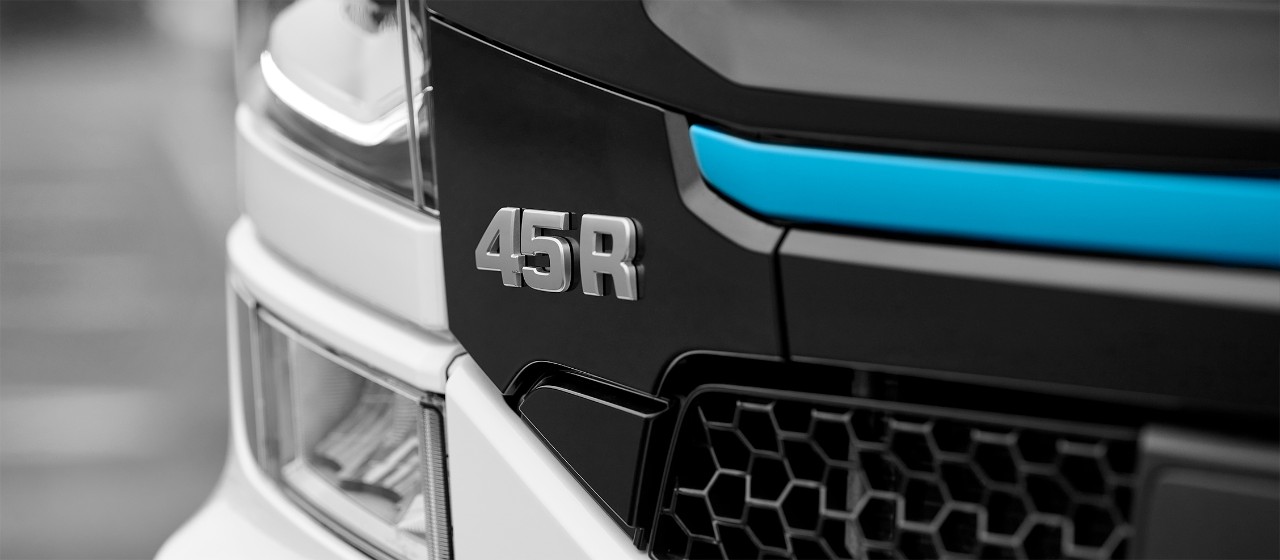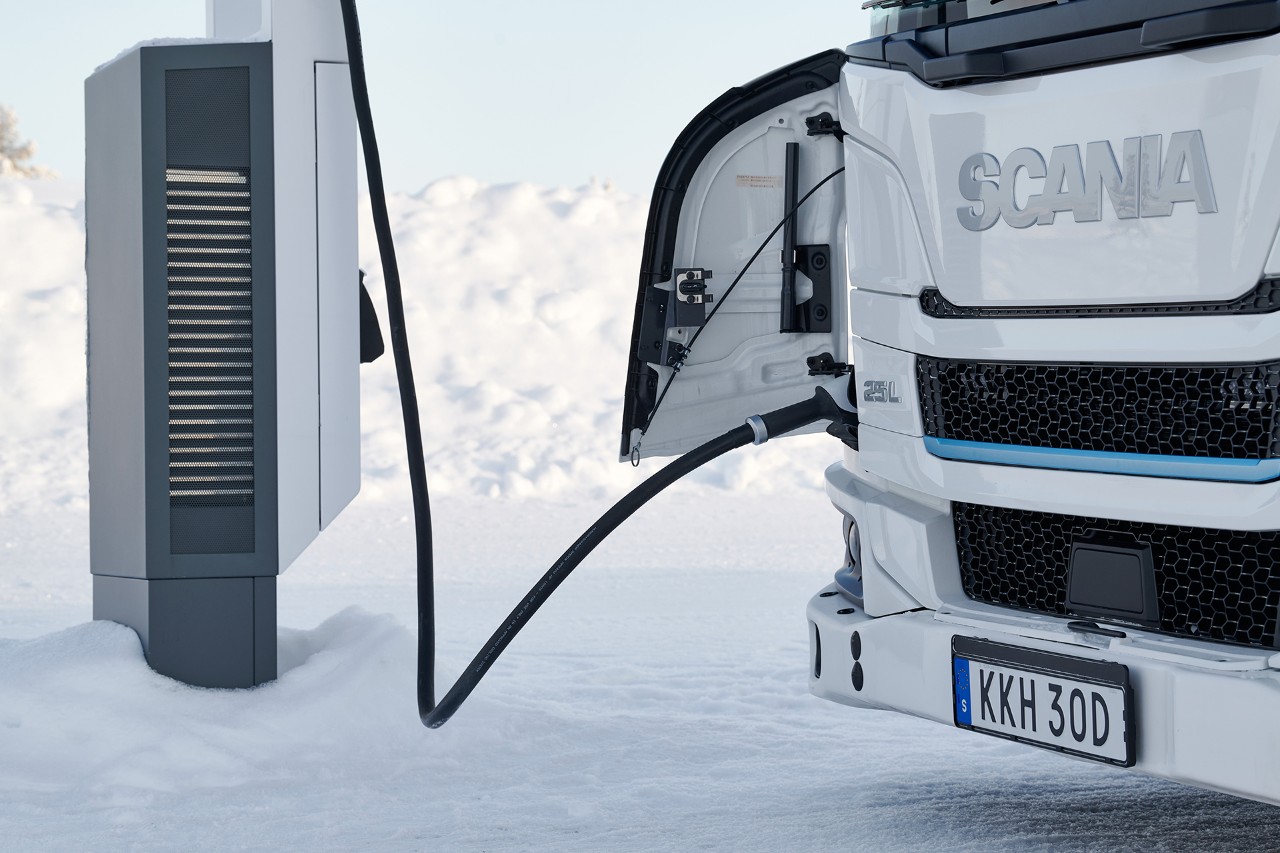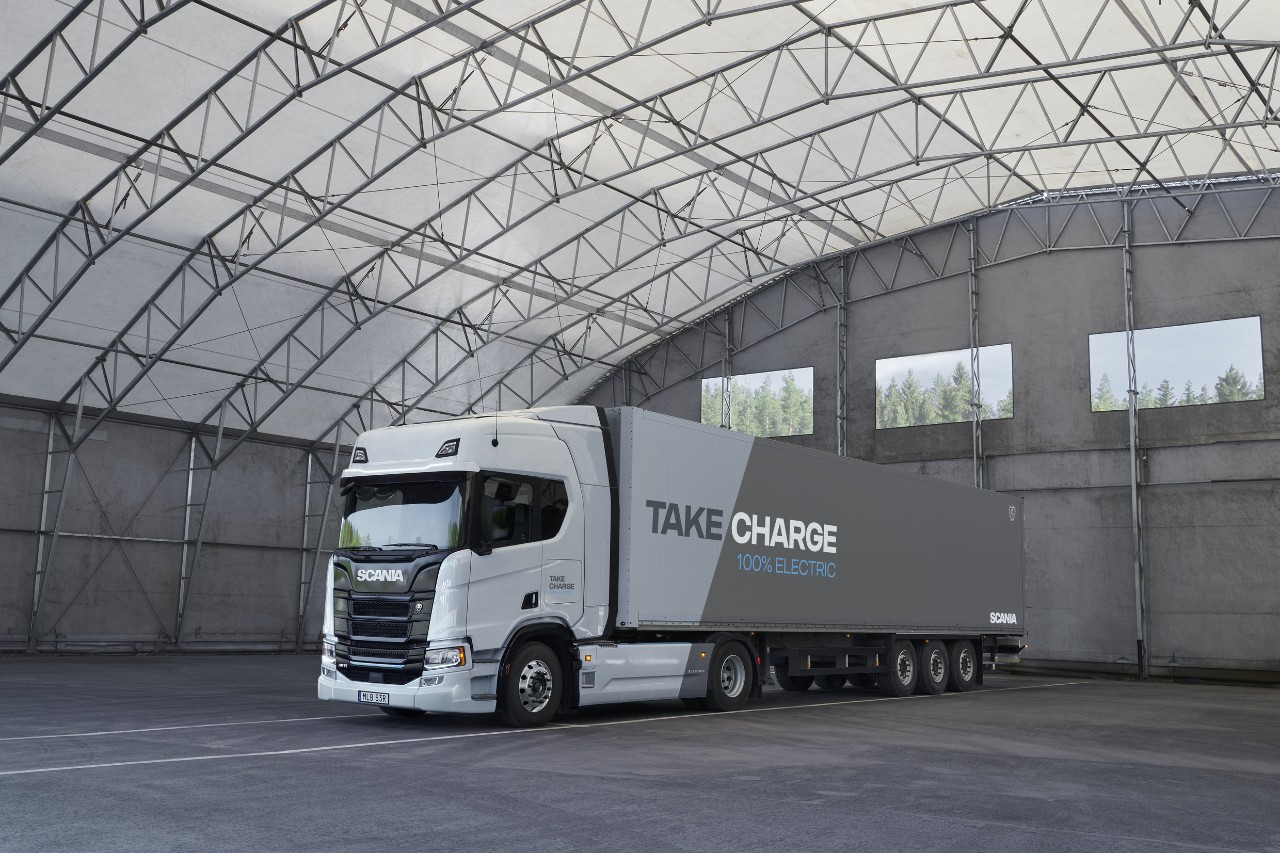
7 myths about electric trucks – busted
It’s time to dispel some of the most common misconceptions about electric trucks.
Myth #1: Electric trucks have limited range
Yes, but range anxiety, the fear of running out of power, should be a decreasing concern. Significant advances in battery technology are continuously extending the range of electric trucks. Scania’s latest, third-generation electric truck has a range of up to 400 km with gross train weights of 40 tons.
“This means it is already possible to electrify a lot of typical transport jobs,” says Kristoffer Nyberg, Head of e-Trucks Solution Management within Scania.
Myth #2: There aren’t enough charging stations
Contrary to many people’s assumptions, public charging is not the sole solution for electrifying transport.
“According to our transport analyses, a big share of the energy needs for electric trucks can be taken care of by depot charging. Between 55 and 80 percent of the charging needs, depending on application,” explains Johan Björkegren, Head of Charging Product Management within Scania.
In the long-term, the successful electrification of heavy long-haul applications depends on a comprehensive public charging infrastructure. But that’s already underway in Europe through the joint venture Milence, in which TRATON and Scania are stakeholders. Milence plans to install and operate at least 1,700 high-performance fossil-free charge points on and close to highways and logistics hubs across Europe.
Myth #3: Electric trucks are too expensive
While electric trucks cost more upfront than conventional vehicles, total cost of ownership (TCO) analyses reveal their long-term economic benefits and savings. In some cases, electricity prices are more competitive than diesel. And various incentives, subsidies, and tax breaks in many regions also contribute to making the transition to electric fleets more financially viable.
Recently published research from Chalmers University of Technology in Sweden shows that it can be cheaper to run heavy goods vehicles on electricity than on diesel. The research was based on heavy goods vehicles driving 553 kilometres between two Swedish cities, comparing two different battery sizes and two possible prices for fast charging.
“Our conclusion is that it seems possible to electrify this type of vehicle in a cost-effective way,” reports Johannes Karlsson, Doctoral student in Automatic Control Engineering at Chalmers.
Myth #4: The working environment for the driver is worse
“In the winter, it’s too cold. In summer, it’s sweaty.” This was a common misconception about the driver environment in electric trucks when they first started to arrive. The fact is that the climate system in a Scania electric truck works just as well as it does in a combustion engine equivalent.
Another feature that drivers who are new to electric trucks usually appreciate is how quiet they are to operate, and that they are free from vibrations. Or, as a representative for Scania’s Norwegian customer Asko says in our accompanying film: “Our drivers really value the electric trucks because there is a lot less noise.”
Myth #5: Charging takes too long
In spite of their size and performance, truck batteries can be charged quite quickly, and with planning, during natural breaks in the working day. Not only that, you can partly charge your batteries to cover the specific distance you need to travel.
“It’s actually a myth that you always have to charge up to 100 percent,” says Johan Björkegren. “The important thing is that you charge enough to fulfil your transport assignment, to the next planned charging. And since your vehicle seldom arrives at the charging station completely empty, it would be a very unusual situation to have to go through a whole charging cycle.”
Instead of talking about the time for charging a truck battery from 0 to 100 percent, Björkegren wants to highlight the term “added range”: how many kilometres of range you can add to the truck during a given time.
“In our latest electric truck, we have managed to increase the charging speed to 300 km added range per hour for a typical transport,” he says.
And new and even quicker charging technology is under development. Scania is currently piloting the next generation megawatt charging technology, MCS, which will cut charging time in half for heavy-duty vehicles.
Myth #6: Electrification isn’t happening yet – we can wait
Emissions regulations; sustainability goals; transport buyers demanding fossil-free transport; subsidies; tax relief; municipalities requiring quiet trucks for night-time deliveries; rapid technological development. All of these factors are combining to quicken the process of electrifying heavy transport.
“The shift will come quick, and in many situations it’s already here,” says Kristoffer Nyberg. “Our recommendation to our customers is to start their e-mobility journey right away. Start on a small scale with educating yourself, and by electrifying parts of your fleet; as long as you do start.”
Myth #7: The environmental impact is greater
Are electric trucks really greener than their combustion engine counterparts, if you look at material mining and battery manufacturing?
A Scania study covering the entire vehicle life cycle, from raw material extraction to vehicle recovery, found that producing a battery electric vehicle entails a higher environmental impact, due to energy-intensive battery cell manufacturing. But overall, the total life cycle impact on climate change shows a dramatic reduction potential for the BEV, thanks to the much lower impact in the use phase. All facts and figures in the report are third party verified by IVL Swedish Environmental Research Institute.
Depending on the carbon intensity in the EU electrical grid, the life cycle greenhouse gas reduction spans from 38% (EU mix 2016) to 63% (forecast EU mix 2030). Powering the vehicle with green electricity will fully utilise the BEV’s clean energy potential. The results show a life cycle GHG reduction of 86%.
***
So, as you have read, the arguments against transport electrification and electric trucks keep on diminishing or even disappearing altogether. Forget the myths and listen to the experts: electric trucks are the future of heavy transport. Electric trucks are here to stay. Join us on the journey!
Read more

Charging
We help you find the right charging solution for your specific need.
